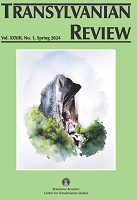Avram Iancu, the National Hero: Controversial Aspects
Avram Iancu, the National Hero: Controversial Aspects
Author(s): Ioan Bolovan, Sorin ŞipoşSubject(s): Cultural history, Museology & Heritage Studies, Political history, Social history, Politics of History/Memory
Published by: Academia Română – Centrul de Studii Transilvane
Keywords: Transylvania; Romanians; Avram Iancu’s last two decades;
Summary/Abstract: In Romanian historiography, few specialists have investigated Iancu’s life after 1852. Even Silviu Dragomir, in his 1924 monograph, went only as far as the year 1852 with his research. In time, however, two points of view emerged about Iancu’s last years (between 1852, when the emperor visited the Apuseni Mountains, and 1872, when Iancu died). For Silviu Dragomir, the behaviour of the leader of the Motzen after 1852 can be explained by a neuro-psychic disease caused by the pressure experienced during the Revolution, the great responsibilities he took, and the treatment of the Motzen and their leaders by the Austrians after the Revolution. Most historians considered the refusal of the leader of the Motzen to meet the emperor the first sign of a mental disease, but there are also testimonies that rule out madness. It is our contention that Iancu’s “disorders” from 1852 to 1872 which his contemporaries talk about are in fact more or less serious bouts of depression, lasting shorter or longer spans of time, and therefore to label Avram Iancu “a madman” nowadays, as well as in the past, is doing a huge injustice to the memory of an exemplary leader.
Journal: Transylvanian Review
- Issue Year: XXXIII/2024
- Issue No: 1
- Page Range: 20-30
- Page Count: 11
- Language: English

